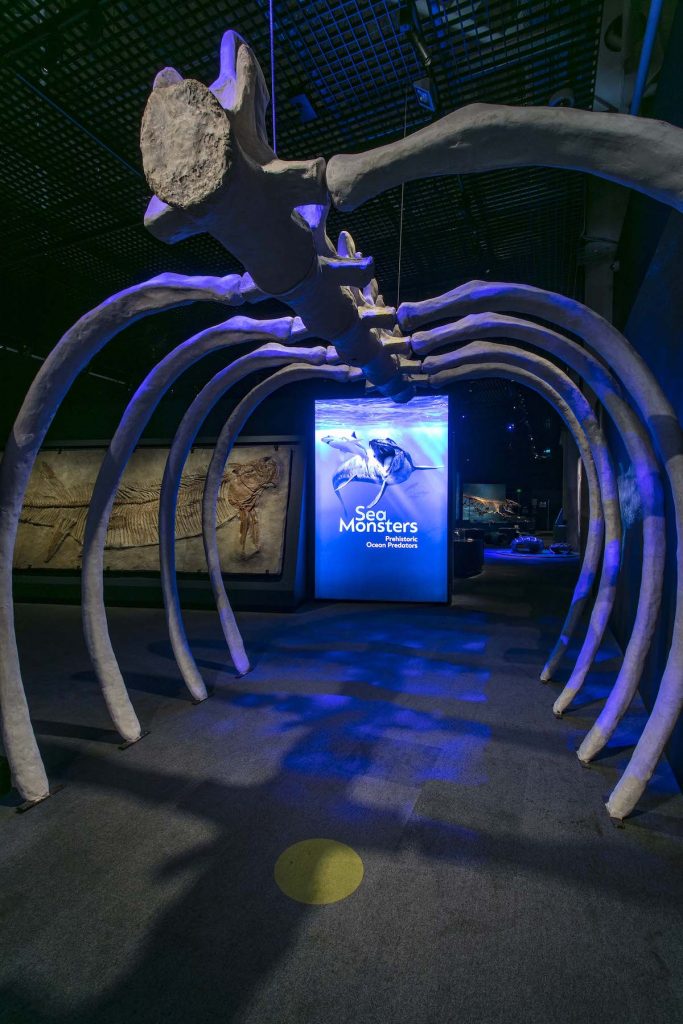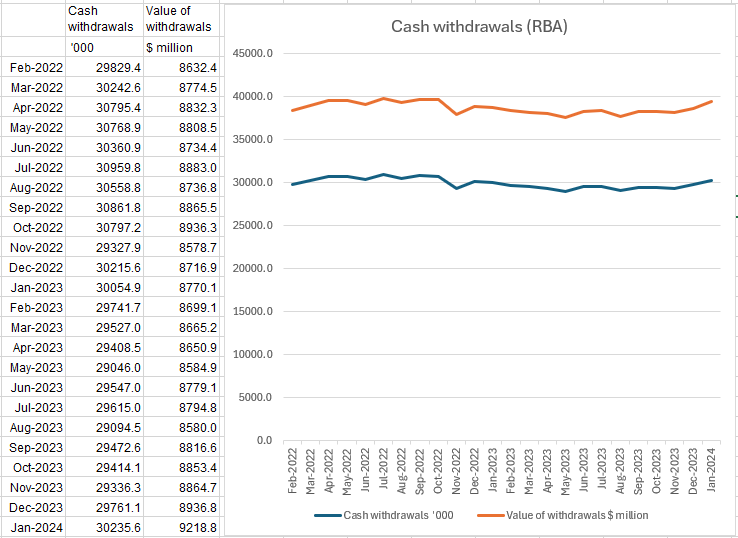
Dr Mikael Siversson has a thing for old sharks.
And when we say old, we mean millions of years old.
Palaeontologist, Dr Siversson is the head of the Department of Earth and Planetary Sciences at the WA Museum and specialises in the study of the remains of the huge sharks that roamed the oceans millions of years ago.
It’s no surprise then that he is a fan of the WA Maritime Museum’s latest exhibit Sea Monsters: Prehistoric Ocean Predators – which runs until July 16.
The exhibition is about extinct marine reptiles that shared the world with the land-living dinosaurs. This is the first exhibition of its kind for Australia.
It includes life-sized casts from real specimens and real fossils from Australia and around the world that are millions of years old, never before seen in WA and reptiles that were more than 20 metres long that hunted the oceans.
More than 70 exhibits tell the story of how these once land-dwelling creatures adapted to the sea.
Exhibits include a 13-metre-long elasmosaurus, a nine-metre prognathodon, a 1.4-metre kronosaurus jaw, and a five-metre-long fish that died after swallowing another fish whole.
Developed by the Australian National Maritime Museum in partnership with Queensland Museum, the exhibition was first displayed in September 2019 at Australian National Maritime Museum.
While Dr Siversson hasn’t been involved in putting the current exhibition together, he is involved in fieldwork in WA every year which finds the remains of the extinct reptiles.
Ichthyosaurs are the most common group found in WA, and mosasaurs, a huge aquatic lizard, are only found in WA on mainland Australia.
Dr Siversson says the mosasaurs were the apex predator in the ocean from about 80 or 85 million years ago to about 66 million years ago.
“They were very, very big lizards, absolutely spectacular predators,” he says.
An excellent section in the exhibition is devoted to the creatures and has the cast of a complete skeleton that is around nine metres long.
WA also has some fossils of turtles, which are the only group of reptiles that survived the extinction at the end of the Cretaceous Period that killed the dinosaurs.
Dr Siversson specialises in the sharks and rays from the Cretaceous and Cenozoic times in Australia, North America and Europe but with a focus on Australian mid-Cretaceous and Miocene faunas, along with Cretaceous dinosaurs and marine reptiles from Australia and northern Europe.
He manages the museum’s palaeontology collection, of around 1.5 million plant and animal fossils.
It is rare to find complete fossil skeletons so Dr Siversson says much of his work involves putting the pieces from different skeletons together to create a complete animal and it’s a time-consuming process that can take years.
“Some of the outcrops in WA are incredibly rich. There are places where we go that it is pretty much guaranteed that we will find not just remains of one reptile, but multiple ones.
“Last year we went out and found, I think, three partial skeletons of ichthyosaurs.
“There is a section on the third floor at WA Museum Boola Bardip in the Portals of the Past Gallery where we feature marine reptiles that we found just north of Kalbarri which is one of the areas where you can find these creatures.”
Dr Siversson says finding the best places to look for fossils is basic detective work.
“Firstly, every palaeontologist has their own area of expertise. I work on fossil sharks, but also on marine reptiles from mainly the Cretaceous period, so it’s a matter of looking through the records of the geological survey of the state or territory you are in to see where they have recorded marine rocks of the right age and then it’s just a matter of going out and exploring those areas.”
To get a skeleton ready to exhibit could take from a year to a decade.
“In some cases, you might have, for example, outcrops on a cattle station where the cattle have trampled the skeleton, so you end up with 1000 pieces that you have to glue together, which is painstaking work.
“First you have to clean the bone or the bone fragments, glue them back together and then describe them in a scientific journal then you could consider putting them on display and that might take several years until there is space available or parts of an exhibition are rotated. It’s a long process.
“But the value is not only for the exhibition, it’s for the great scientific value as well that we learn about these creatures that inhabited our coastal waters hundreds of millions of years ago.”
We are still discovering new fossil species.

“Two years ago, one of our volunteers discovered the remains of a plesiosaur of a type that is most likely new. We have a world-renowned plesiosaur expert coming with us on our field trip this year to study this particular individual in great detail.
“We found half of the skeleton on the first trip, more of it the second time and we hope to find even more the third time, so we’re slowly putting together this skeleton and it appears that it is probably a new species.
“One type of ichthyosaur that we found has never been found in Australia before, so there are new things to discover in WA.”
Dr Siversson says it is a remarkable feeling when you first see a bit of bone sticking out of the ground.
“Then there is all this activity starting and you get these people together and very carefully remove the sediments to try to reveal more of it.
“In this particular area where we are working, you don’t find a whole complete skeleton, you find partial skeletons because there were a lot of sharks around and we find hundreds of fossil shark teeth, so they would have been scavenging any dead marine reptiles on the sea floor.
“This particular plesiosaur, the head was gone and all four flippers were gone but much of the rest of the skeleton was still there.”
His own most exciting discovery was back in 1996 when he found a skeleton of a shark that turned out to be not only a new species, but an entirely new family of sharks. These were found just southeast of Exmouth and were bigger than white pointers.
They were the dominant sharks around 100 million years ago.
“I was walking along the outcrops with my ex-wife, and she was the first to spot one of the vertebrae of these sharks, a really large vertebrae, about 9cm across, so I instantly realised the potential of finding not just one vertebra, there are usually more than one.
“And sure enough there were more vertebrae and then we started finding teeth and in the end, I think I collected more than 120 teeth.”
Dr Siversson says the Maritime Museum exhibition is a world-class exhibition and includes a replica skeleton of a plesiosaur found in Queensland that is possibly the best-preserved plesiosaur ever found in Cretaceous rocks anywhere in the world.
Running alongside the exhibition are a number of public programs such as Sunday seminars and after-dark movies. More information and tickets are available at visit.muse um.wa.gov.au/maritime/sea-monsters-prehistor ic-ocean-predators.
Win Win Win
We have three family passes (2 adults and 2 children, or 1 adult and 3 children) to give away to some
lucky readers.
To be in the draw simply email win@haveagonews.com.au with Sea Monsters in the subject line or write
to Sea Monsters C/- Have a Go News PO Box 1042, West Leederville 6901.
Closes 15/5/23.






























